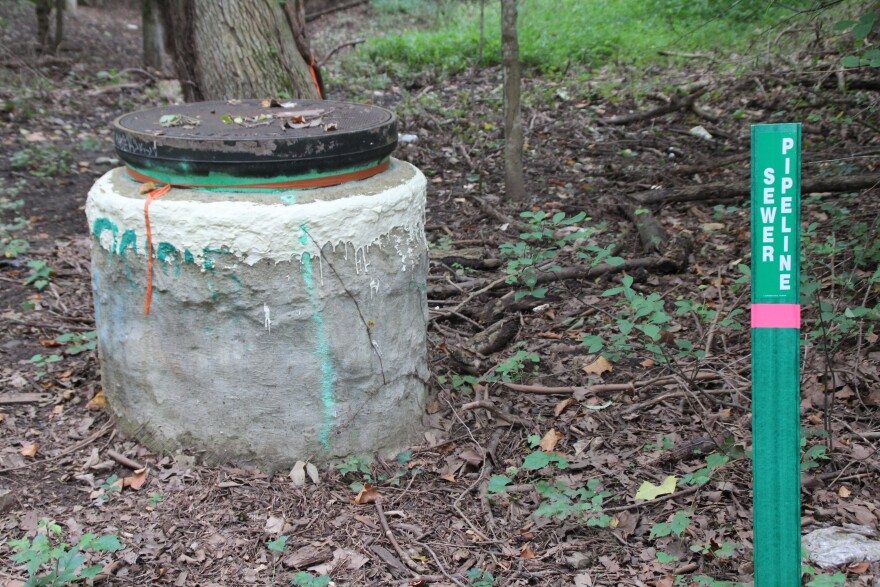Baltimore city’s latest sewer repair plan contains $2 million a year to help residents with clean-up costs if sewage backs up into their homes. But it won’t be much help to those who already have spent thousands for repairs.
Derrick Lennon has lived on Rosecrest Avenue, just inside the city line, for 30 plus years. Trees frame the street in this neighborhood of modest brick homes where lawns are perfectly manicured and porches are decked with flowers. You wouldn’t know there was anything wrong with from the outside.
"So the most recent thing happen maybe about two years ago," says Lennon as he gives me a tour of his basement. There’s dry wall, some furniture and carpeting, up until you reach the bathroom.
“It must have come from my commode cause it wasn’t anything in there, in the Jacuzzi. The line had backed up with sewage and it had come. Everything was wet. They had to come and cut the carpet and the wall all the way across.”
You can clearly see the extent of the damage when raw sewage backed up into the bathroom, poured out of the toilet, soaked the carpet and parts of the dry wall. And it’s happened more than once. Lennon says the first time he paid $4500 out of pocket to make repairs. The second time he got lucky and his homeowner’s insurance bore the $3,800 repair bill. He says he’s called the city Department of Public Works to inspect.
"The first thing the city do is to make sure they immediately relieve themselves of liability," says Lennon.
Lennon isn’t alone. A few blocks to the south of Lennon, Helena Hicks paid $4,400 out of pocket for repairs because of sewage back-ups at her home on Bowers Avenue.
“They had to dig up my whole front lawn to put a new pipe in," says Hicks. "I had to pay for it.”
Back in December when the city was fined a million dollars for failing to meet a federal deadline to upgrade its sewer system, Hicks was cautiously optimistic.
“What the city promised was that they would do all the work that needs to be done on it by 2030. And we said that was too late," says Hicks. "We need it done now and finished by 2023.”
Under a modified decree with state and federal authorities, the city has until 2021 to upgrade the Back River wastewater treatment plant, and another nine years after that to make fixes to eliminate 83 percent of the sewage overflowing the system.

Rudolph Chow, director of the Department of Public Works, says they are tasked with assessing the size and capacity of the existing pipes and improving water quality.
But as the city remains strapped for money Chow says, "It comes down to affordability. We know what we need to do, but can we can afford to do that in such a short time.”
Another part of the billion dollar consent decree requires the city to pay $2500 to each household affected by sewage overflows after the city replaces the sewage pipes. But Lennon, Hicks, and others with claims won’t see any of that money. Chow says he understands their concerns.
"In order for us to administer the program. The question is how far do we go back and under what circumstances," says Chow. "It is very difficult to make that kind of determination. So through our negotiation we basically agreed that we will look forward.”
As the city moves to fix the problems of sewage overflow, Helena Hicks says her neighbors are still dealing with the aftermath of years of sewage.
“The homes that had massive damage people are still in them because they can’t sell them," says Hicks. "No one is going to buy a home that has got two or three feet of raw sewage in it.”
The Environmental Protection Agency and Maryland’s Department of the Environment must sign off on the agreement and a federal court is expected to approve in October. But the city will continue to struggle with its ancient sewer pipes and tens of thousands of gallons of sewage overflow for years to come.



